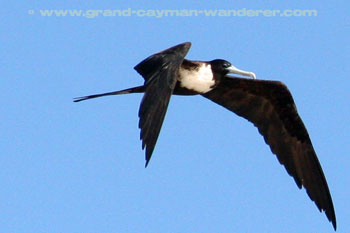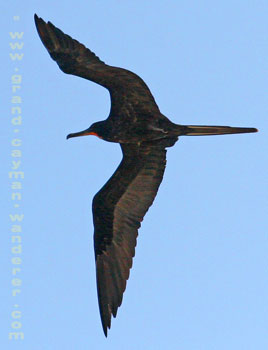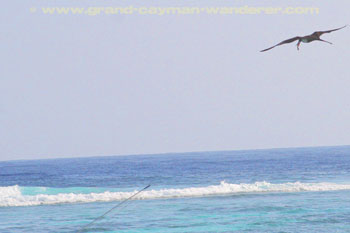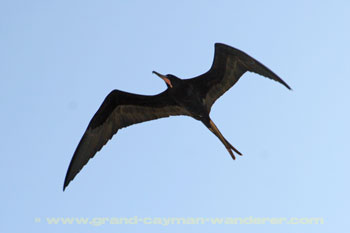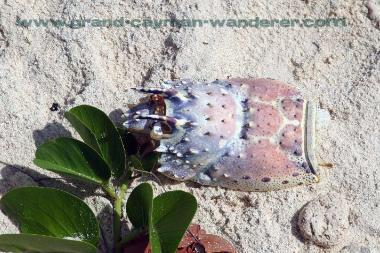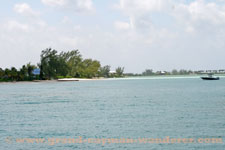Cayman Frigate Birds
I said on our Wildlife page how much I liked the Cayman Frigate Birds. How they added a tropical feel to Grand Cayman and how these magnificent creatures soaring and swooping around the island shoreline really make for a different experience.
These birds are also known as ‘man o’war birds’ (which is what a ‘frigate’ is.
I add that in case you aren’t up to speed on naval warship terminology:).
Their sleek military lines also reinforce the frigate theme as the frigate is a small, fast, agile warship, like these birds.
Cayman Frigate Bird: the ‘Magnificent’
Well this page is devoted to just them, starting with this female — they’re the ones with the white breast.
They have the longest wingspan in relation to their body weight of any bird, which gives them their peculiarly ‘pterodactyl-like’ appearance. To be precise, they grow to about 39 inches long (100 cm) and have a wingspan of about 85 inch (215 cm), more than twice its length.
This one is a male. You can tell by the all-black feathers and red pouch under the bill, which it puffs up during its courtship display. The feathers are black but can look shimmery purple in the sunshine.
For the most part they live in tropical climes venturing up to the Caribbean on the eastern side of central America and also along the western coast from Ecuador to Mexico.
There are other kinds of frigate-birds but the one that comes to Cayman, the Magnificent Frigate-bird, is the only one that regularly comes this close to North America.
Hunting For Food
Grand Cayman’s species is called the ‘Magnificent’, presumably the other species in the world aren’t so grand. They eat fish, squid or octopus scooped from the sea (or, less magnificently, stolen from other birds).
Despite living around, and over, the sea, frigate birds don’t land or swim on or in the water, which means they have to get their food by scooping or from other birds that do catch fish, such as gulls, or like the one in our photo, from an angler’s fishing line or from the fish, squid or octopus caught and cleaned by fishermen.
The other consequence of not being able to rest on water is they spend 24 hour days in flight, using thermals to climb to great heights, like gliders, and swooping down to sea level to catch and steal fish.
I also said they look like relics from the dinosaur age — sort of modern pterodactyls — and the next two images are good examples of that.
This ‘magnificent’ male, in the photo above, shows clearly the red pouch on the throat and its forked tail.
To my mind, they have one big advantage over seagulls — those other hangers-on at the beach, coast and harbors — and that is they don’t make a lot of noise. Despite their size and regular closeness, they’re quiet, as all good neighbors should be.
Return to Home Page from Cayman Frigate Birds

Cayman Pictures
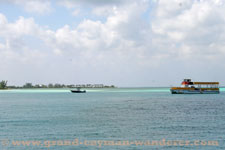

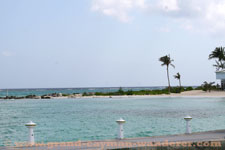
Cayman Pictures



